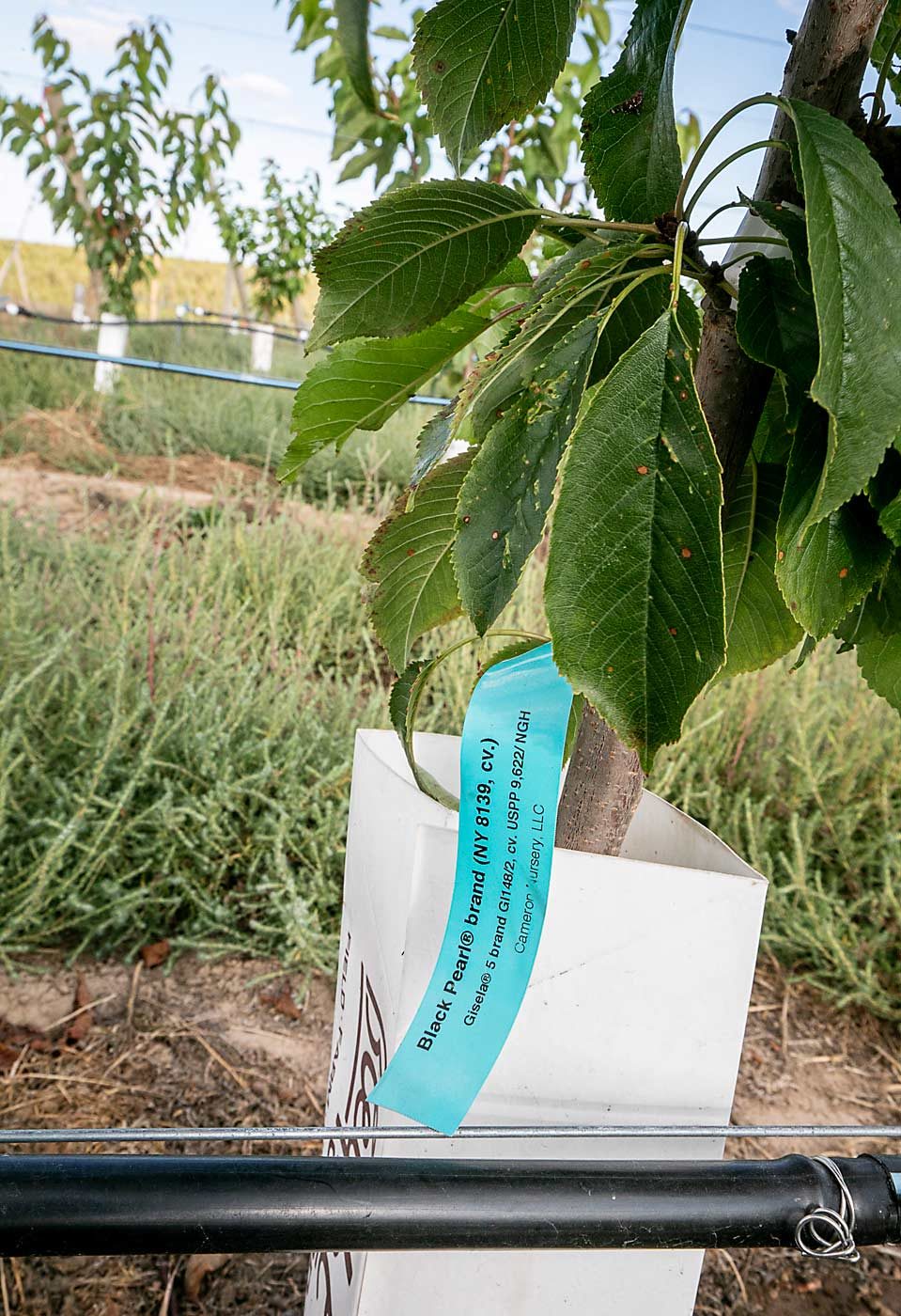Mistakes of mislabeled or misplaced trees happen from time to time.
The nursery industry trades in millions of plants each year, and many of them look similar when shipped. Only when trees start to grow do differences appear, and even then, only eyes keen from experience can spot them. The rise of tissue culture propagation only adds to the risk.
To mitigate problems in the future, large nurseries and tissue culture labs are investing in their own DNA screening equipment, technology that is becoming more accessible and affordable.
“It’s where we’re all going to end up in the future, I think,” said Tye Fleming, owner of Helios Nursery in Quincy, Washington. The company owns a tissue culture lab and plans to add screening in the coming years.

Recently, a mishap caused an unknown number of nurseries to receive and deliver cherry trees on Gisela 6 rootstocks instead of the smaller Gisela 5 roots growers expected. The origin, timing and extent of the Gisela mishap are still unclear, said Wanda Heuser Gale, president of Gisela Inc., the Lawrence, Michigan, company that holds the North American license to market and distribute the German cherry rootstocks. But her company is paying for the affected nurseries to run DNA screens to help sort it out.
“I’ve lost a lot of sleep over it,” Heuser Gale said. She urged concerned growers to contact their nurseries. To reset, the company is importing fresh Gi.5 wood from Germany and sent it to quarantine at the Foundation Plant Services at University of California, Davis, part of the federal Clean Plant Network.
Gi.5 rootstocks are more dwarfing than Gi.6, so the mix-up may leave growers with more vigor than their plant spacing, training style and trellis structure can handle (see “What to do now?” on Page 31). Fortunately, Gi.5 rootstocks are much less common than Gi.6 and Gi.12, therefore the problem isn’t as big as it could have been. Heuser Gale called this an “embarrassing problem, but not a devastating one.”
She declined to name the nurseries impacted by this Gisela mix-up, but one, Cameron Nursery in Eltopia, Washington, was willing to talk about how its customers responded.
Stacey Gilmore has been communicating with about six growers who planted trees on what they thought were Gi.5 roots over the past three years, taking samples from some for screening. Gilmore works for Dicot LLC, a nursery sales company that represents Cameron, Helios and other nurseries.
None of those growers plan to rip out trees and start over, he said. That would delay their production even longer, even if they could get new trees right away.
Jeb Whitby, a Cameron client, does not plan to replace any of his trees, or even seek a refund. However, he is allowing Gilmore to sample his Mesa, Washington, orchard for DNA screening, just so he has better information about future planting decisions.
Whitby, a farmer north of Pasco, Washington, produces mostly hay but also owns roughly 100 acres each of apples and cherries. He has been planting cherries on a variety of dwarfing rootstocks, mostly Gisela and Krymsk, 4 or 5 acres at a time for the past nine or 10 years. He hasn’t had any problems.
“They’re growing well, and everything looks fine and dandy,” Whitby said. “It’s just we’re always evaluating.”
Prevention
Errors in the orchard tree chain-of-custody inevitably happen. Even orchard crews sometimes misplant — say, when one worker sets a new tree aside and another mistakenly picks it up for a different block.
Ask nurseries and tissue culture companies and they’ll share examples. Gisela dealt with a similar problem more than 15 years ago. In 2011, Cornell University announced that some Geneva 222 apple rootstocks mislabeled as Geneva 214 reached nurseries.
Sierra Gold Nursery, one of the larger North American fruit tree suppliers, once delivered blush cherry trees to growers expecting a dark red variety. Some mistakes probably go unnoticed, said Jack Poukish, president and owner of Sierra Gold, but that one didn’t. Nurseries more often get complaints about cultivar true-to-type mistakes, which are easier to see than rootstock errors.
“We try to take every precaution to prevent it, but errors happen, and we feel sick when they do,” Poukish said. “We try to replace the stock and/or refund the money that grower spent.”
The good news, he said, is that technology to limit such problems also has progressed. Polymerase Chain Reaction, or PCR, screening compares the DNA of plant tissue to known samples, much like a fingerprint from a crime scene is compared to a database of known people. Previously limited by cost to research institutions, the technology is becoming cheaper and more accessible.
Sierra Gold, which also operates its own tissue culture lab, purchased its own PCR equipment about three years ago. North American Plants in McMinnville, Oregon, will do the same in 2020, said Tom Auvil, a company horticulturist.
The tools won’t completely eliminate risk, but they’ll help, Auvil said. “Some products have very distinct appearance in the greenhouse. Others are very subtle and a test is needed to completely verify.” •
—by Ross Courtney
Related:
—What to do with the wrong rootstocks
—Another Geneva mixup






Leave A Comment